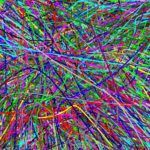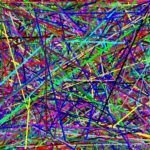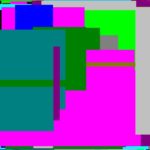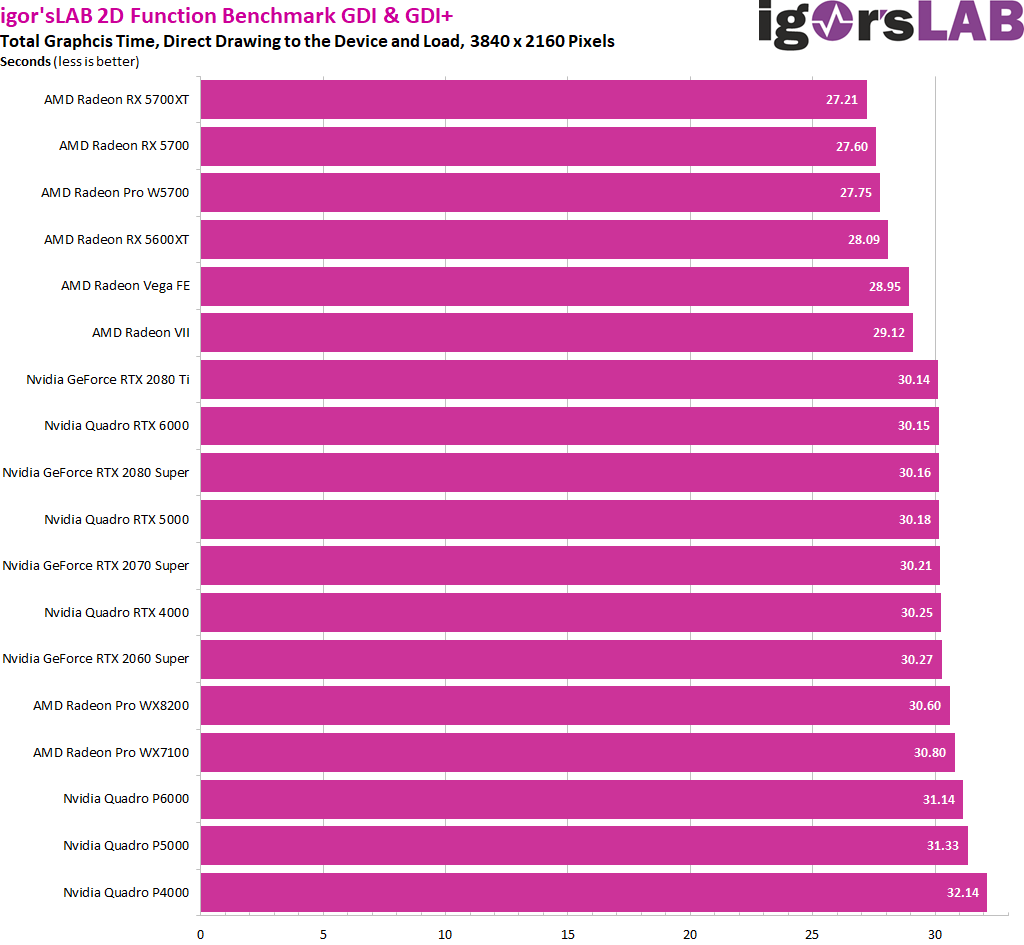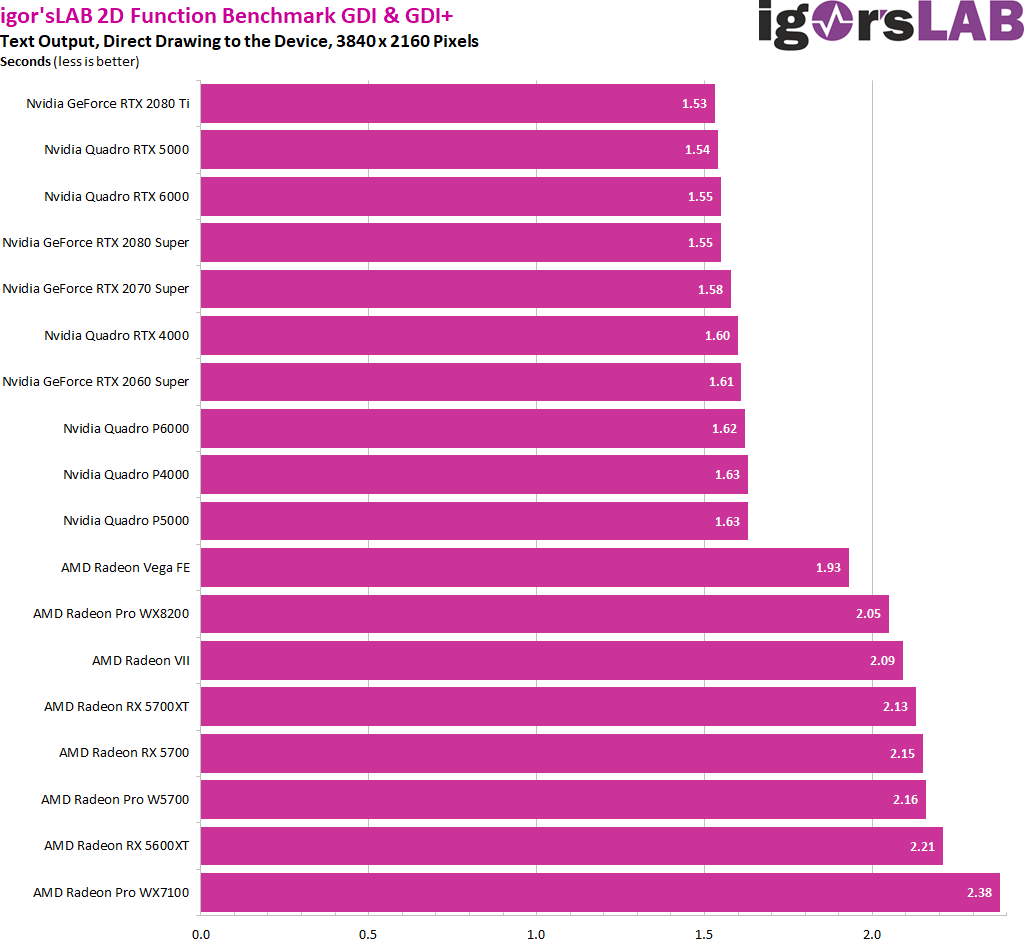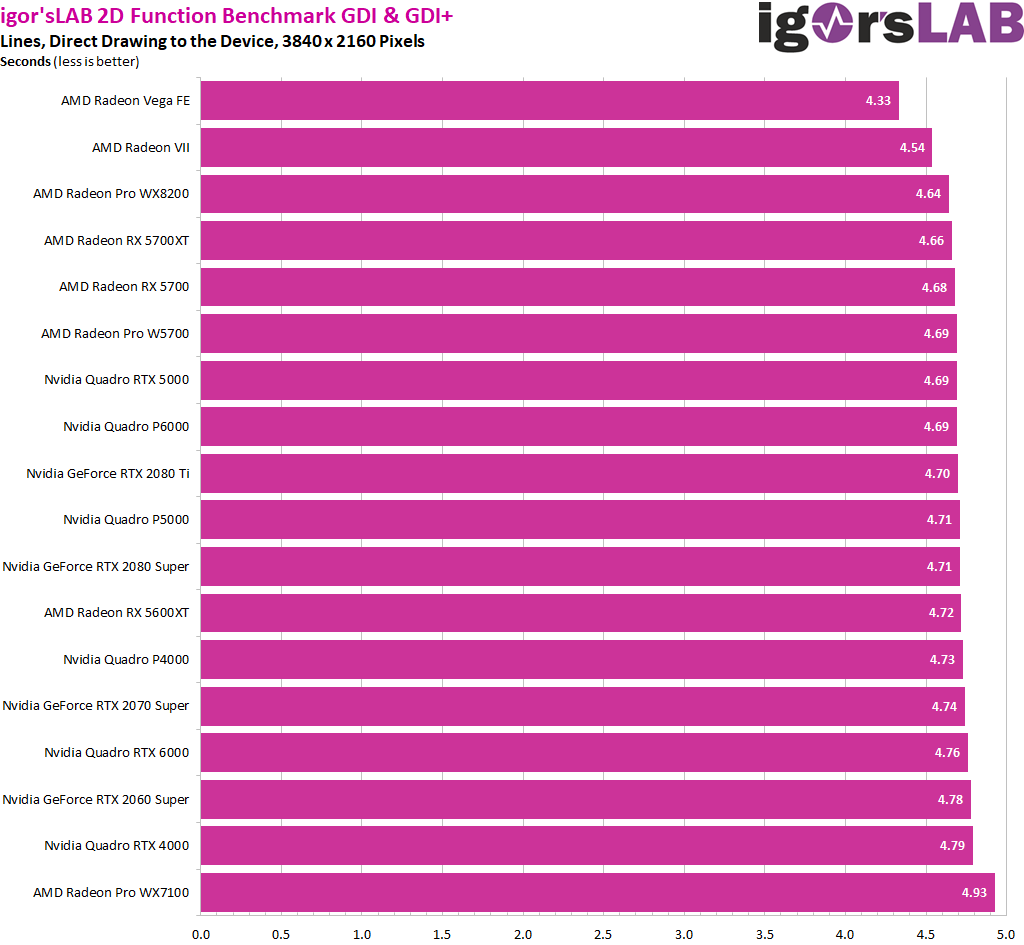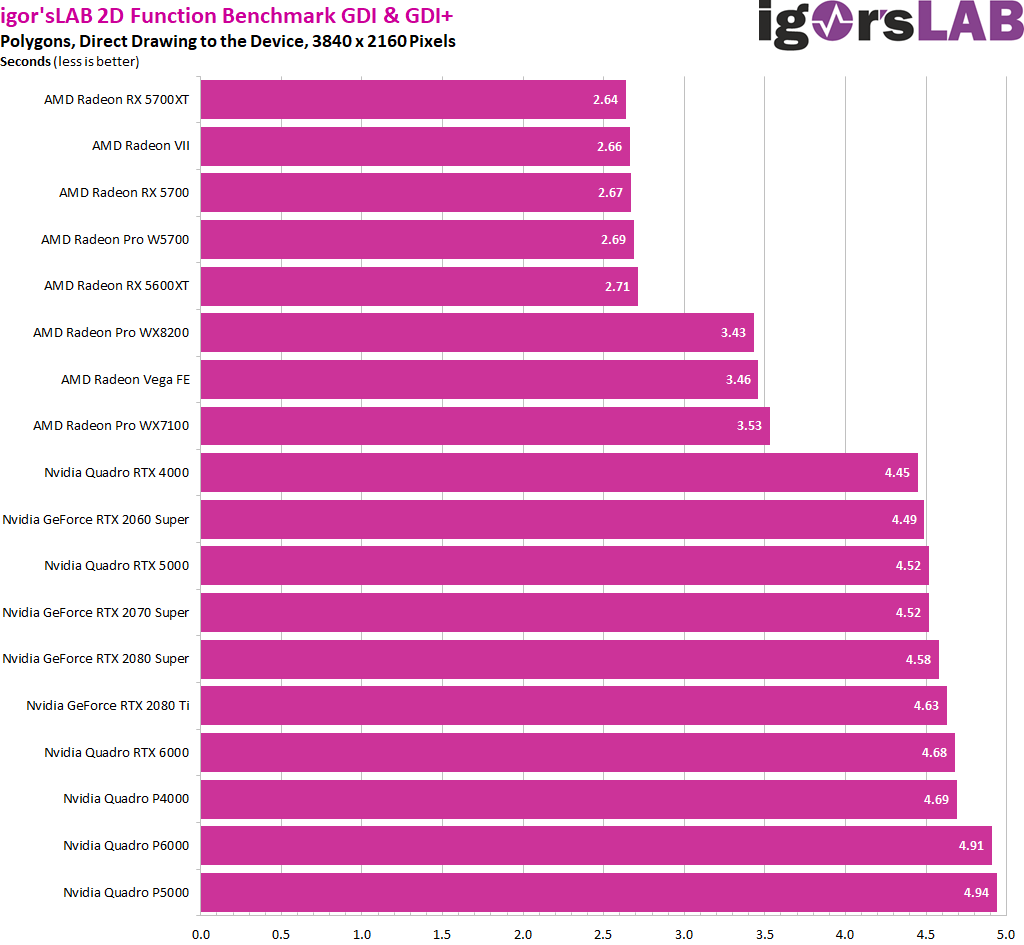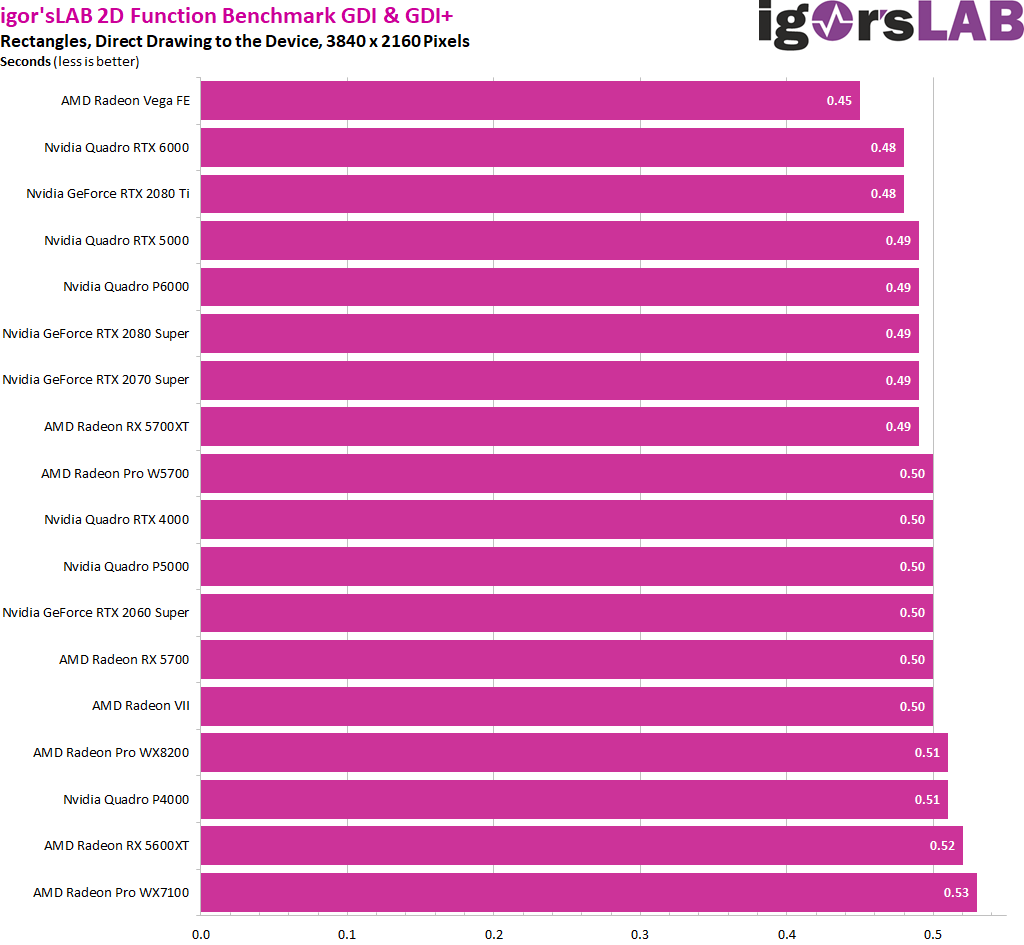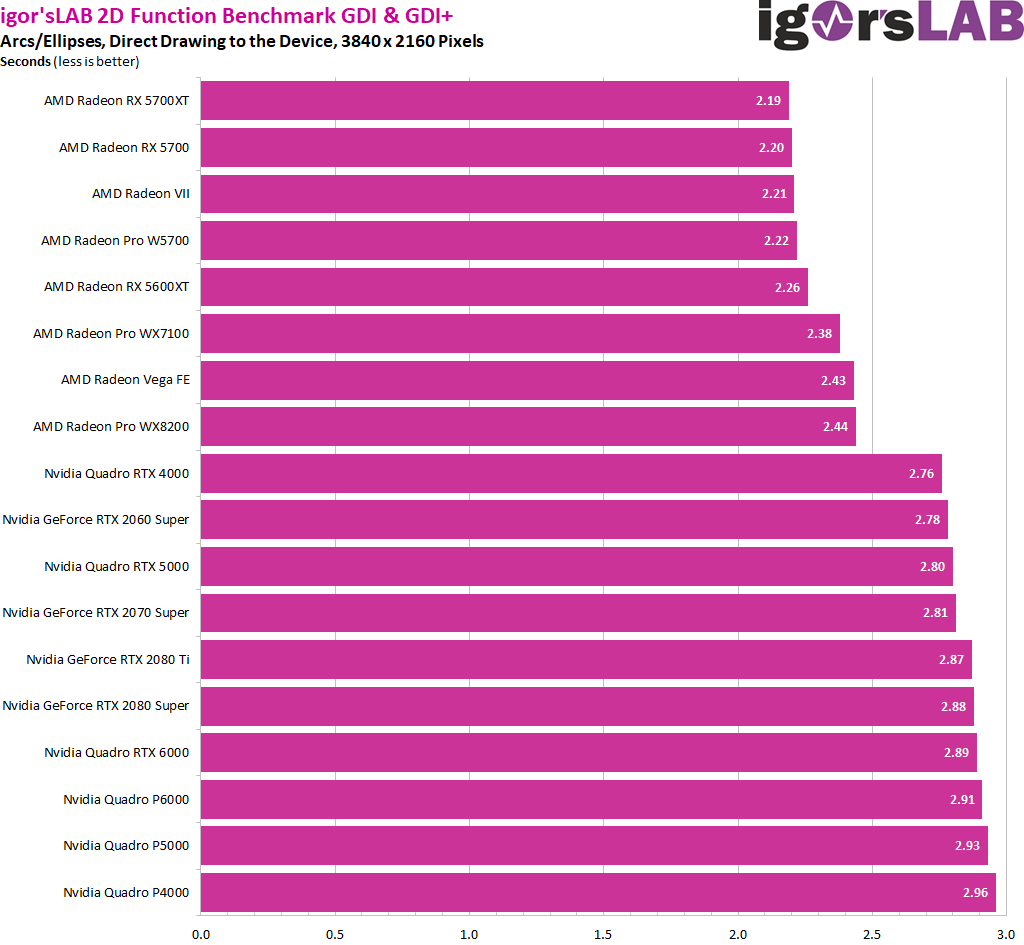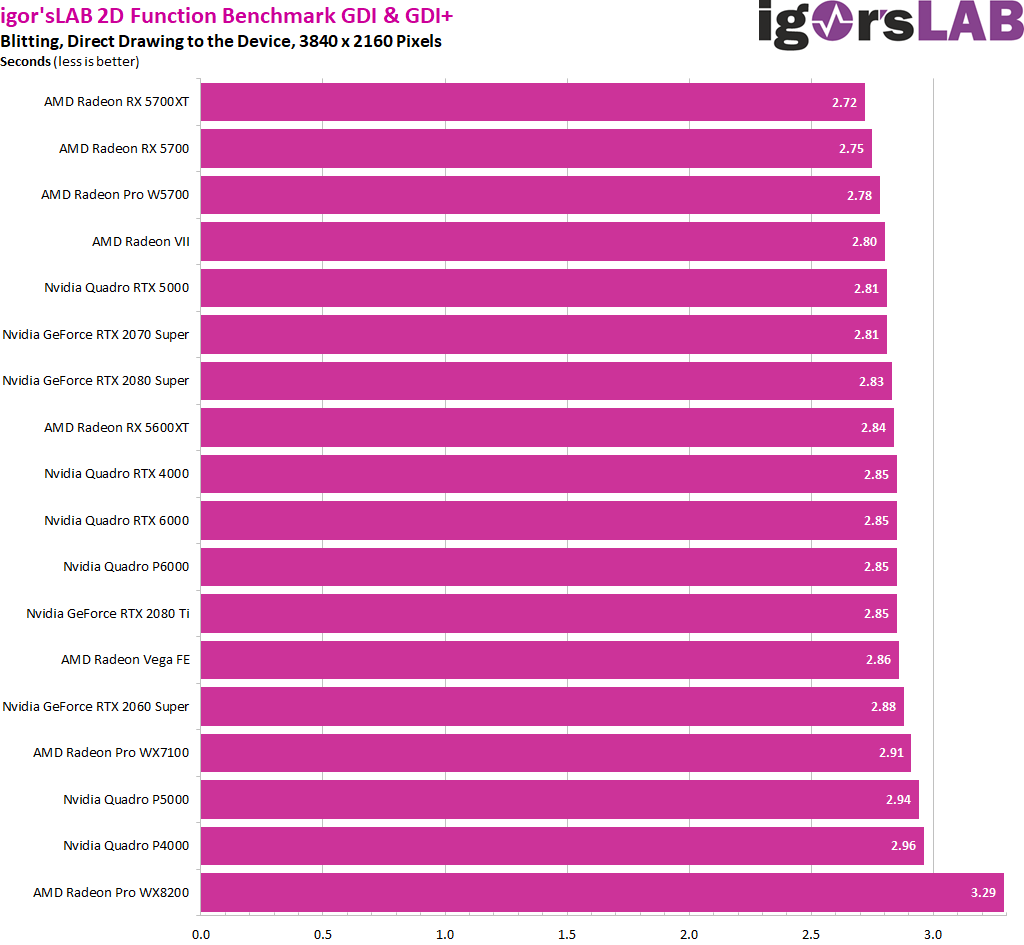The Graphics Device Interface (GDI/GDI+) of Windows is simply not dead. Whether it’s older graphics applications up to CAD programs, or simply displaying the simple GUI of many programs – it’s still output via the GDI as if there were no tomorrow. But all Windows versions after XP no longer support hardware accelerated output for the graphics functions. With the introduction of the Unified Shaders and the elimination of the specialized 2D units on the graphics cards, all of these things are now done via the driver as a kind of wrapper. The CPU has to do most of the computing, and it’s also up to the driver how efficient and with what overhead the output to the D3D is done. The driver models since Vista still support, at least in parts, the hardware acceleration for blitting, i.e. copying graphics content within the memory.
AMD and Nvidia follow different approaches here, so that one can see very well which of the individual functions can be better implemented by the respective driver (or not). According to my research at that time in 2009, especially the AMD driver team in Toronto has caught up a lot, because the ATI cards at that time had some blatant disadvantages. Many functions in the AMD drivers still benefit from this until today. A current stocktaking shows that they are now quite close together.
AMD is still a bit weak in TextOut, while in some areas such as lines, splines and rectangles there is a virtual equality, but with things like the polygons AMD is really going crazy.
Total Graphics Time (Loading, Preserve Memory and Output)
Function Benchmarks (Sub Scores)
- 1 - Overview & Benchmark Selection
- 2 - Creo 3.0
- 3 - Solidworks 2019
- 4 - Solidworks 2019 Enhanced
- 5 - 3ds Max 2015
- 6 - Inventor Pro 2020
- 7 - Various CAD and Science Applications
- 8 - Windows GDI und GDI+ Driver Performance
- 9 - Rendering & Compute
- 10 - Adobe Premiere Pro 2020 & DaVinci Resolve 16
- 11 - Adobe Lightroom Classic (2020)
- 12 - Autodesk Maya 2019 and Arnold
- 13 - Blender RTX (OptiX) & OctaneBench
- 14 - Thermal Imaging / Infrared
- 15 - Power Consumption
- 16 - PSU Recommendation
















